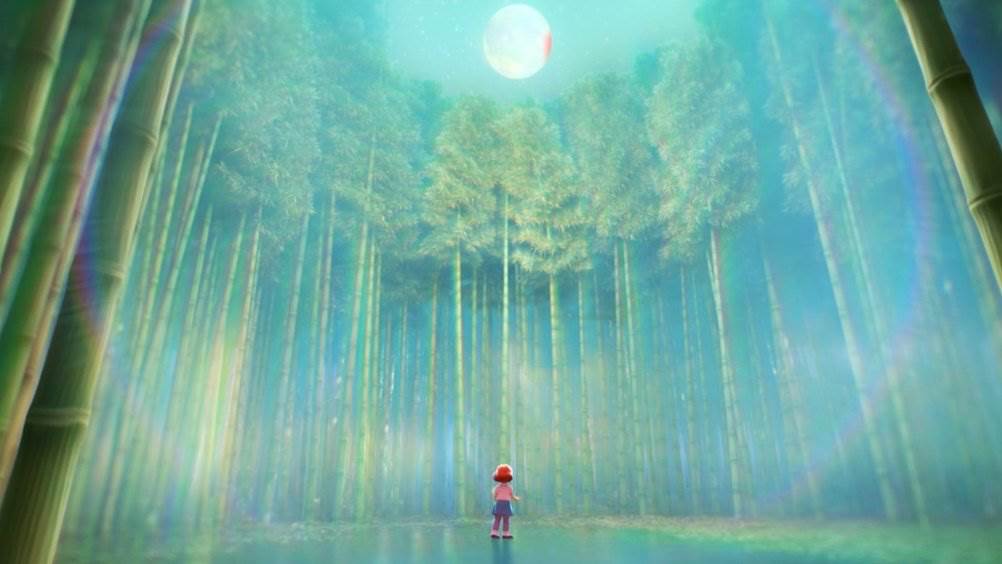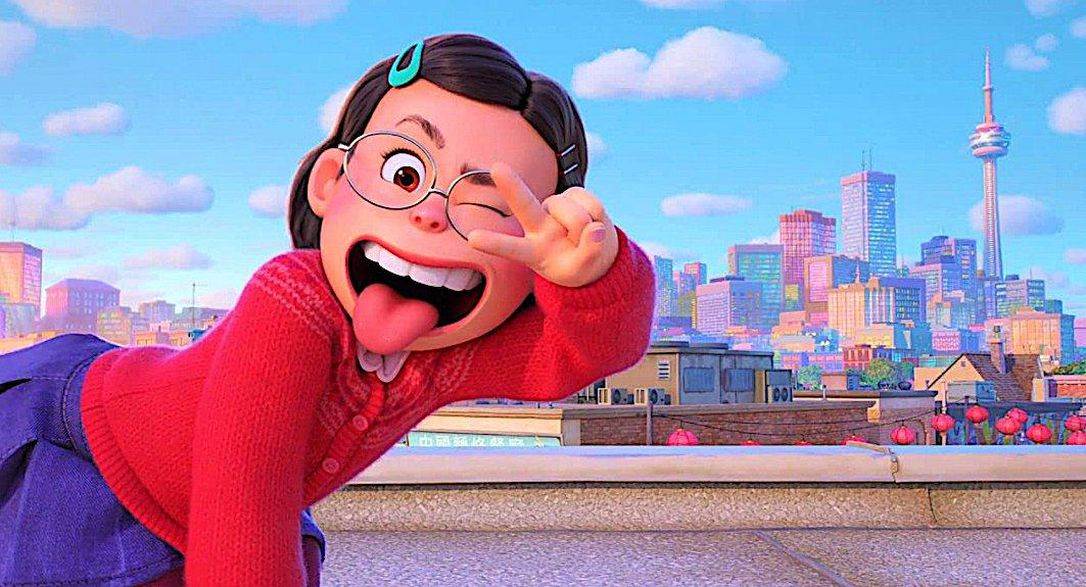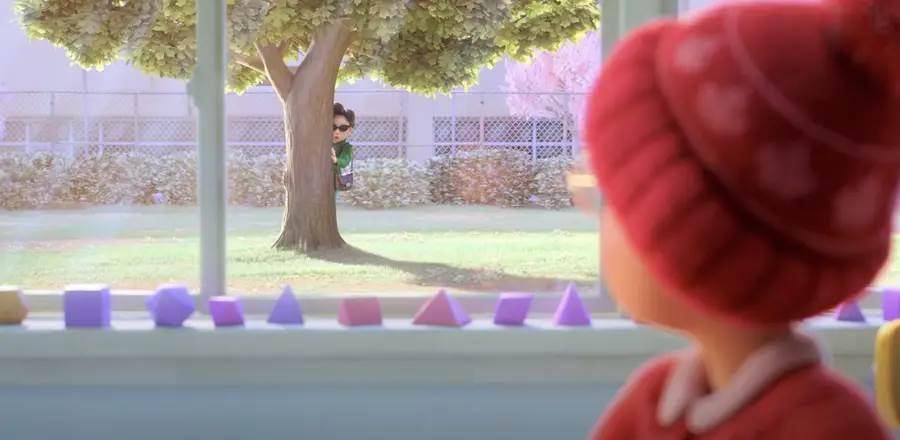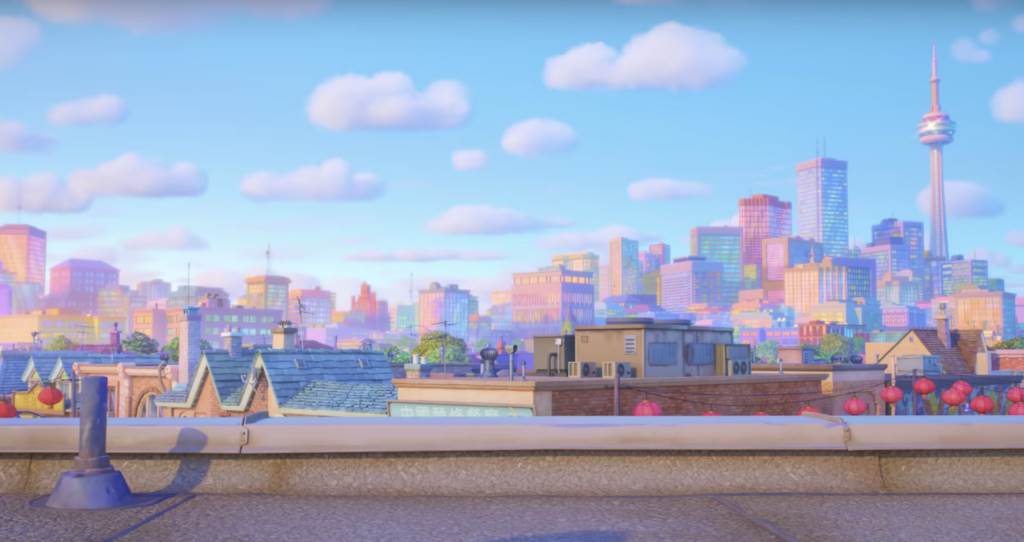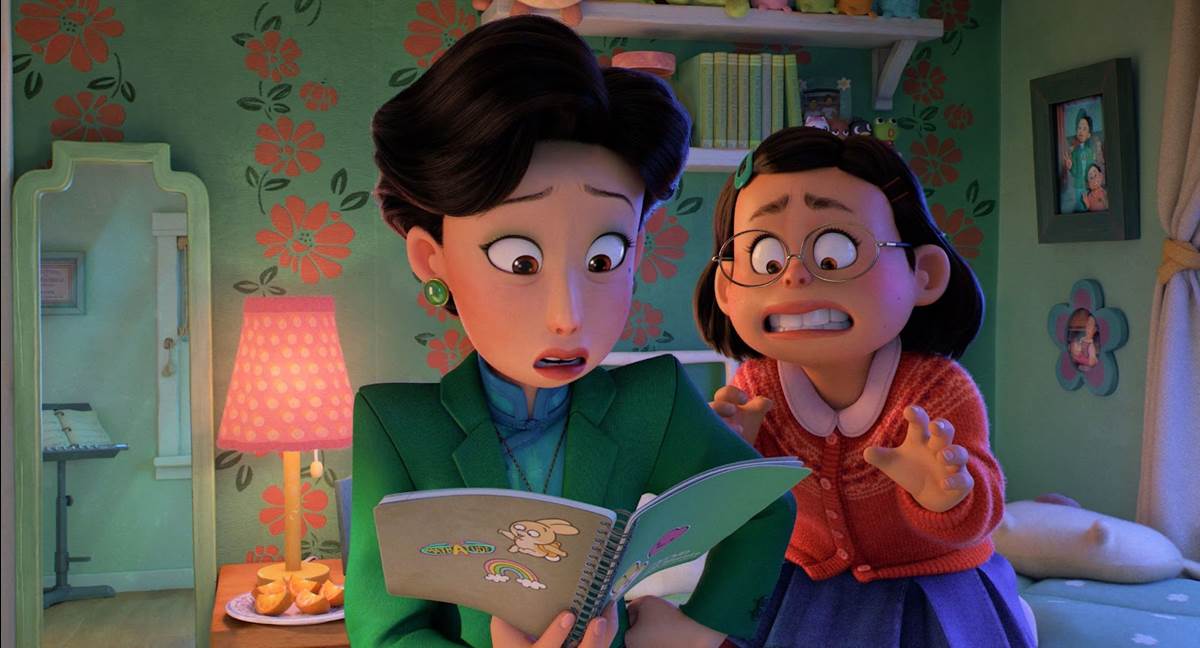Panda Fur and Fun: What We Learned From The VIEW Conference “Turning Red” Panel
As part of the fun of the release of the 25th film in the catalog from Pixar Animation Studios, Turning Red, the VIEW Conference held a special panel that featured the creative team from the new film.
Together, the panel shared some fun tidbits and inspiration about Turning Red, as well as production stories and anecdotes that are fun for fans of the art of animation. This was a more technical discussion than what you’d even find in the making-of documentary that debuted alongside the film on Disney+, Embrace The Panda, which took a far more storied and personal approach.
The panel was Moderated by Ramin Zahed, Editor in Chief of Animation Magazine, the panel consisted of:
- Domee Shi, Director
- Lindsey Collins, Producer
- Danielle Feinberg, VFX Supervisor
- Rona Liu, Production Designer
- Mahyar Abousaeedi, Director of Photography, Camera
- Aaron Hartling, Animation Supervisor
- Jonathan Pytko, Director of Photography, Lighting
First and foremost, Turning Red has been turning heads in both directions. On one hand, many are welcoming Pixar’s latest feature with open arms. The film has a 95% fresh rating on RottenTomatoes, and many are praising it for its break from the norm in terms of Pixar’s animation style and more mature content. However, while that very same source garners all of that praise, it is also the root of its strongest criticisms. According to Producer Lindsey Collins, conversations were had with Pixar Chief Creative Officer Pete Docter regarding how far they can push some of the themes and depictions, and what they could include and what they couldn’t in their tale of “magical puberty.”
Later in the conversation when asked about what some of the more challenging aspects of the film were though, this was not brought up again, but rather director Domee Shi said without missing a beat was a different kind of conversation. Towards the end of the film, Mei Lin is in an ethereal Bamboo Forest in the astral realm with her mother, Ming, as they need to separate from their red panda spirits. There, the two characters have a deep moment where Mom has to accept that her daughter is getting older and becoming her own person. It was this conversation that was challenging for Domee and the writers, who wanted to keep the authenticity of a strong Asian family (where “I love you” is rarely said out loud), but also have a satisfying and meaningful moment for the audience.
It was also in that scene that such a strong character, Ming, becomes weak and vulnerable. One of the ways that is done is through some great camera work. Director of Photography Mahyar Abousaeedi who specialized in the camera moves and layout said that to make her feel especially vulnerable, the camera moves wildly throughout, using the trees to hide Ming, and keep the view of her obstructed, in an almost “I don’t want to be seen” kind of way. Camera tricks like this were also used on Mei Lin, who’s life is strictly planned to a tee at the beginning of the film, where the camera is pretty steady and locked, until she becomes a panda and her life becomes far more disorganized and unstable, which the camera work also echoes.
While a coming-of-age tale is nothing new, this story is deeply personal in its roots. Domee set the film in her native Toronto, injecting it with her culture and also very specific stories and moments that appear in the film. For example, one scene in the movie sees Mei Lin sitting in her math class while her friend Miriam motions that her mom is outside. While the situation played out a bit differently in the film, the idea of Mei Lin’s mom lurking outside the school window and hiding behind a tree did actually occur to the film’s director in her youth.
While specific stories are peppered throughout, so is Domee and production designer Rona Liu’s love of anime. The characters and environments have a decidedly different look than most other Pixar fare. Characters’ eyes and pupils reflect traditional anime styles when excited or angered, the animation is quick cuts instead of smooth motion, and even moments where we’ll just say “battle” ensues, black and white flashes and rapid motion of lines and light is reminiscent of the anime style. Even characters have a single color scheme, Mei in reds, Ming (and Miriam) in Greens, others in purple or yellow. Another trait lifted from popular anime and Japanese exports including Sailor Moon and Mighty Morphin’ Power Rangers. While the characters have a bright color identity, they are also found against a background of pastels that make up the animated Toronto.
The film also adopted a new style called “chunky cute.” Not only did it give the film a unique artistic identity, it also gave the characters an oddly more realistic look but without the photorealism. Kids have braces and moles, some have “patchy eyebrows, or legs that aren’t clearly defined or rail thin. The chunky style guide also got applied to the real world location of Toronto in the movie, with the CN Tower adopting the look and where some 5 story buildings might be, they’ve made windows wider and taller and that building might become a stylized 3 stories instead of a photorealistic 5.
Despite the “chunky cute” simplification of things, there were still plenty of technical challenges. Animators have a tendency to push rigging systems to their limits with overexaggerated movements and amplified performances. That brought about the creation of “Profile Movers,” (simply put) a new way of rigging and articulation developed in-house at the studio that was put into use in the film to help craft the very, very expressive characters in the movie. A system that worked so well that VFX Supervisor Danielle Feinberg says it will be used at the studio for the upcoming slate of films and beyond.
The collaboration chemistry behind the group was incredibly evident during the discussion, and when asked by viewers what characters Animation Supervisor Aaron Hartling liked to animated best during his storied career, he quickly answered: “Ming.” The team burst into laughter before Hartling explained that it was funny because he never touched that character. Ming is a very deep and possibly the strongest, most developed character in the film and he said he was envious of the animators for being able to bring her to life. He even went so far as to suggest that while he was very happy to be the animation supervisor on the film, he almost wished that he wasn’t. That way, he would be able to work on the characters. A sentiment that lighting director Jonathan Pytko echoed by agreeing and saying the same thing, though in the context of lighting the film.
Like all panel discussions in the realm of animation, the Q&A brings an onslaught of questions for career advice or misplaced attempts at networking. While the very notion of these about to be answered had my tuning out from the get go, I was caught off guard by surprisingly honest sentiments regarding the process of getting a job in animation. Though the group was asked what advice they’d give individually, they all collectively agreed that you will be rejected. Not once, not twice, but maybe even 13 times. But keep trying. One member of the team even said that yeah working at Pixar is great, but that could be an end goal. Don’t just apply to Walt Disney Animation Studios or Pixar Animation Studios. Apply to smaller houses and don’t turn down a job because the studio is a household name. You’ll learn countless things at those smaller than you will at those larger, “more corporate” ones.
Turning Red is a clear step in the evolution of the Pixar animation studios, it looks different and feels different than anything that has come before it, and that’s the point. Like Mei Lin, Pixar is growing up and that should be celebrated.
You can watch Turning Red, streaming now on Disney+.


